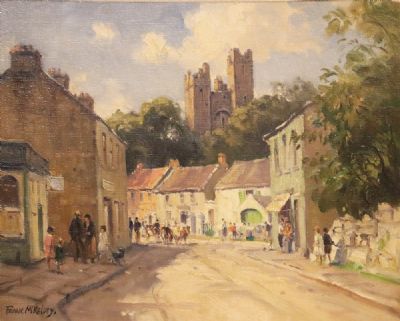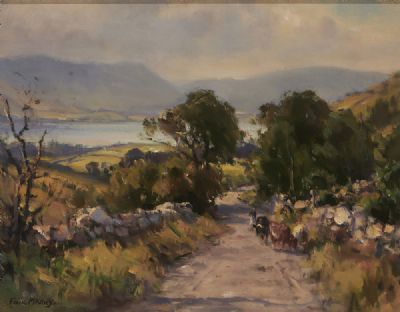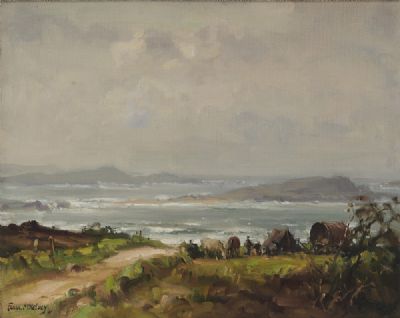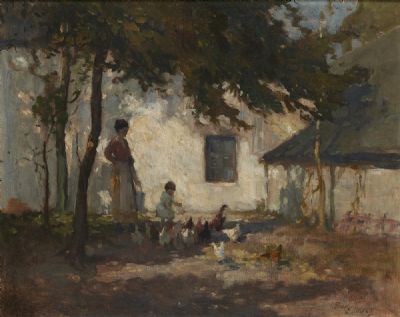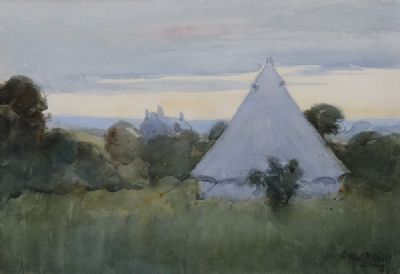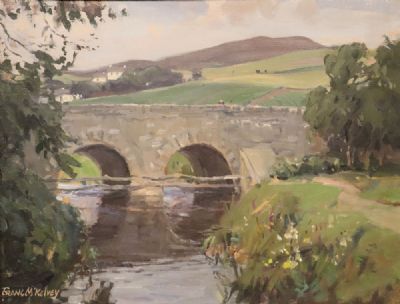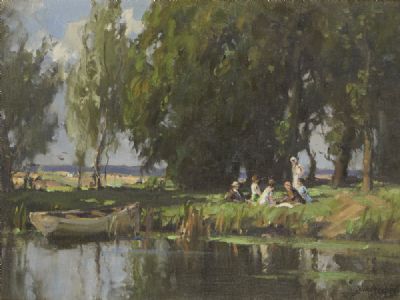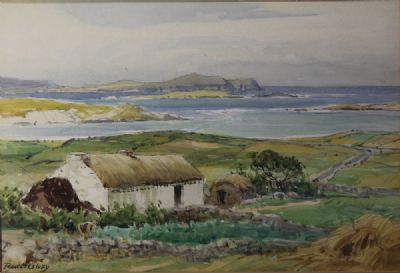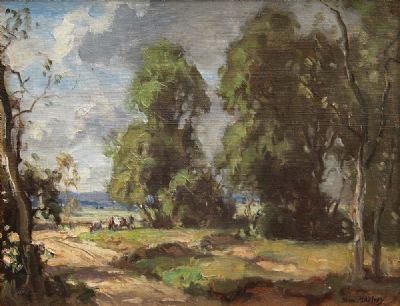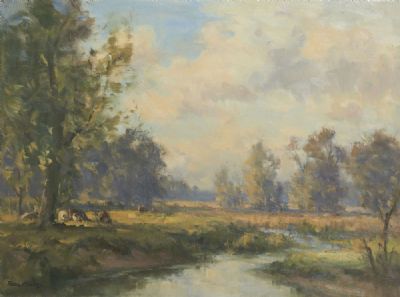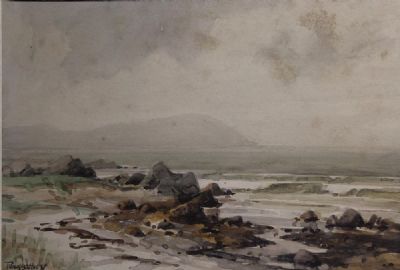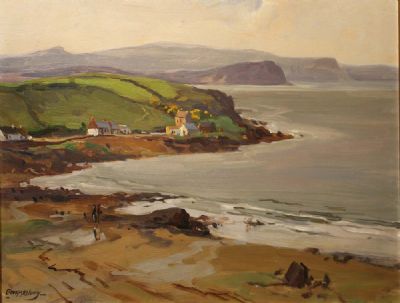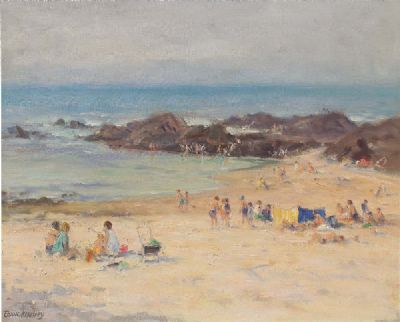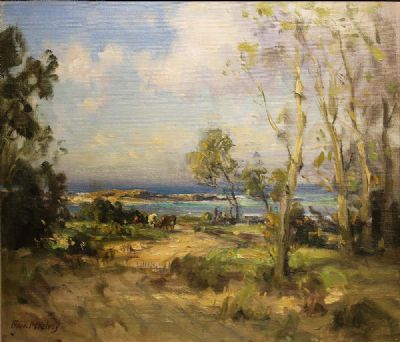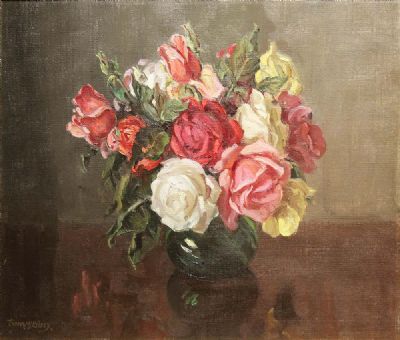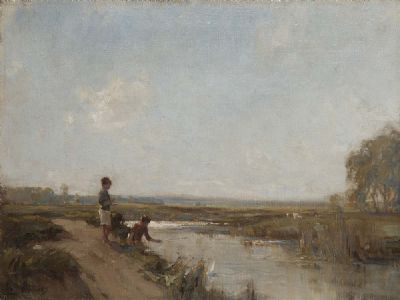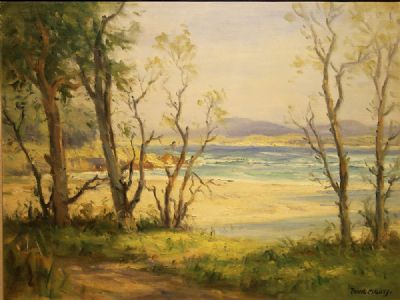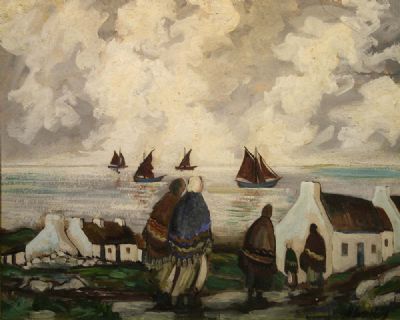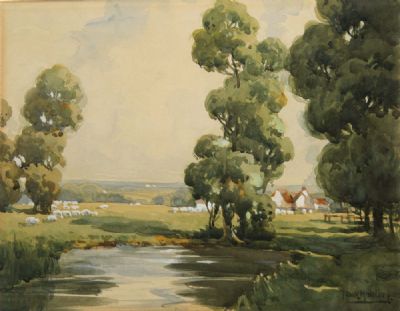Frank McKelvey
Frank McKelvey was born in Belfast. His father was a painter and decorator and McKelvey trained as a poster designer. He began attending Belfast College of Art in 1911 and was instructed in painting by Alfred Rawlings Baker (1864-1939) who had an enduring influence on McKelvey’s handling of paint, his loosely impressionistic technique and his preferred subject matter. McKelvey’s pictures most often depicted a rustic genre scene inspired most likely by his cottage at the Maze near Hillsborough Co Down. The property afforded the nearby river Lagan for ample inspiration as well as a favourite subject of his - chickens. Of this he says ‘It was through this opportunity that I was able to study poultry in all effects of sunlight- a subject in which I have always been deeply interested’.
His early paintings utilise a thick impasto technique, while his application of paint is thinner in later years. McKelvey’s subject can be seen as descending from Dutch 17th Century genre painting, or more recent fin de siècle French movements, but his process was undoubtedly descended from the English tradition of en plein air derived ultimately from Constable (1776-1837). For all his foreign and academic influences, McKelvey’s popularity lies in his having made his subject his own and his paintings portray a distinctly Irish scene. Today he is ‘considered the equal of Paul Henry and James Humbert Craig in his treatment of light and colour…’.
Frank McKelvey was a regular exhibitor at the Royal Ulster Academy in Belfast and Royal Hibernian Academy in Dublin. He was a member of both. His work can be found in various important collections including Queen’s University Belfast, the Royal Ulster Academy, the Masonic Hall in Dublin, Crawford Gallery in Cork, and the Royal Palace of Soestdijk in the Netherlands.
Read More
His early paintings utilise a thick impasto technique, while his application of paint is thinner in later years. McKelvey’s subject can be seen as descending from Dutch 17th Century genre painting, or more recent fin de siècle French movements, but his process was undoubtedly descended from the English tradition of en plein air derived ultimately from Constable (1776-1837). For all his foreign and academic influences, McKelvey’s popularity lies in his having made his subject his own and his paintings portray a distinctly Irish scene. Today he is ‘considered the equal of Paul Henry and James Humbert Craig in his treatment of light and colour…’.
Frank McKelvey was a regular exhibitor at the Royal Ulster Academy in Belfast and Royal Hibernian Academy in Dublin. He was a member of both. His work can be found in various important collections including Queen’s University Belfast, the Royal Ulster Academy, the Masonic Hall in Dublin, Crawford Gallery in Cork, and the Royal Palace of Soestdijk in the Netherlands.
Read More

